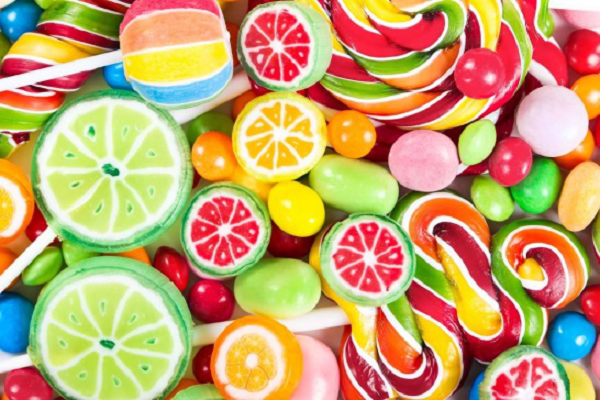He used to pick vegetables from the vegetable field on the afternoon of the first day, and then transported the vegetables to a fishery factory along the river in Nanchang in a tricycle more than 1.3 o'clock in the morning. It was an important distribution channel for vegetables entering the Nanchang citizens' dining table.
Now, Wan Sifu has had no food to sell for several days in a row. The continuous heavy rain since mid-June caused serious guilt in the area. It soaked up the vegetables in the two-acre vegetable plots of his family and caused no harvest.
Yangzizhou Town, which is known as the “vegetable basket†of Nanchang City, suffered heavy losses during this torrential rain. According to Wu Kefa, the deputy mayor, nearly 10,000 mu of farmland in the town was affected. Vegetables such as parsley, small green vegetables, and tomatoes were almost completely destroyed, and the direct economic losses amounted to more than 30 million yuan.
“The Millennium Drought in Poyang Lake†is still in the ears, and it quickly turns into a big one. The speed is so fast that people can't believe it. Therefore, agricultural products are also facing the “big examâ€.
The drought has changed rapidly and the farmers and the days have played in 15 natural villages in Yangzizhou Town, Nanchang City. The villages of Sanlian and Lianming are known for their leafy vegetables, while Xiongwan and Shangfang have featured vine fruits and vegetables. .
Yesterday (June 22nd), Daily Economic News reporters saw a vegetable plot in Wanlianfu Village in Sanlian Village, Yangzizhou Town. The two acres of vegetable land were divided into 16 ridges, except for one ridge covered with thin-film squirrels. In addition, there is not a single perfect vegetable in the rest of the vegetable fields. Wan Sifu said that the fields originally planted vegetables, radishes, leeks, and parsley. Because the water spinach is more resistant to water soaking than other leafy vegetables, plus a layer of film on it, it survives, but it still rots most of the time, leaving only enough for its own consumption.
"Now the parsley is selling more than five pounds and a pound of cilantro on the market. I can earn at least four or five hundred pounds for this ridge. I lost more than 2,000 yuan on one ridge." Wan Xifu said that vegetables are cheaper, but the output is more high. After all, his family lost two acres of vegetable land this time.
“Now the drowning water has receded and the vegetable field has been re-cultivated and a batch of vegetables has been planted.†Wan Xifu said that the growth cycle of the vegetables takes at least one month, and he has no food to sell during the month.
Seated away from the Wansifu vegetable plot, Wan Xueneng’s vegetable plot is even more grainy. All vegetables are rotted after being soaked in rain.
"Now we have to buy food to eat ourselves, and it's funny to say it." Wan Xueneng said that he had encountered this kind of thing for the first time.
A village official from the Sanlian Village Committee in Yangzizhou Town said that vegetable growers are now relying on the weather for food. Before the drought, many dried vegetables died; now, most of the vegetables are soaked. "This is a difficult process for a vegetable farmer and a day game."
Yangzizhou Town was once a vegetable base in Nanchang City. At the peak, 2/3 of the city's vegetables were produced here. At present, there are still more than 40% of leaf and vine fruits in Nanchang city residents.
The market price of vegetables has soared. The vegetable trader Fang Xinmin entered the village and had the most intuitive experience: The price of vegetables was growing day by day.
Fang Xinmin, who lives in the north of the river along Nanchang, sells vegetables for a living. Every evening, he drives a pickup truck to pick up food in Yangzizhou Town.
“The previous sky cabbage was 1.8 yuan per catty, and it was sold for 2.3 yuan yesterday. Today (June 22nd) has been quoted at 2.8 yuan.†Fang Xinmin said that the price of vegetables is so high that the impact on him is not high and the bid is high. Naturally it will be high. The most crucial issue is that many villagers now have no food to sell.
In order to receive more vegetables, Fang Xinmin had to drive to another vegetable base in Nanchang City, Yiyi County, but the distance between the two places was more than 60 kilometers. This undoubtedly increased his transportation costs, and he went to the wholesale sale. Will be at a price disadvantage.
The source price of vegetables is constantly rising, and circulation is naturally rising. In Nanchang City, Shenzhen Agricultural Products Wholesale Center, usually only sells 1 to 2 yuan/kg of small green vegetables. At this time, the wholesale price is around 5 yuan/kg, which is an alarming increase. The price of leeks is at 10 yuan/kg.
Yu Xiaolong, Marketing Manager of Shenzhen Agricultural Products Wholesale Center in Nanchang City, told the reporter of “Daily Economic News†that floods in the South brought great losses to vegetables in Hunan, Hubei and other places, and the output dropped sharply. Therefore, Hunan, Hubei The vegetables that came over were almost out of stock, causing the price of vegetables in the Nanchang Shenzhen Agricultural Products Wholesale Center to increase. Yu Xiaolong estimates that the price of vegetables will not rise so fast, the weather is improving, and vegetable prices will slowly be adjusted back.
At the terminal of vegetable sales, the price of vegetables has undoubtedly touched the psychological bottom line of residents. At Dunzitang Market, one of the largest farmers’ markets in Nanchang City, the reporter found that the price of oiled wheat and vegetables reached 10 yuan/kg, tomato 11 yuan/kg, and lotus root 13 yuan/kg.
"The price of vegetables will be almost equal to the price of pork. I really can't afford it." Xiao Zhao, who had been in the food market for a long time, eventually bought some pork and tofu, and shook his head back.
The human tongue has a range of specific taste sensation neural receptors called taste receptors which are organized mainly as papillae on the tongue. When stimulated by chemicals, natural or synthetic, organic or inorganic, cations or anions, the receptors send signals to the brain which interprets the stimulations as sweet, bitter, sour, salty, and savory (unami, meaty taste). For examples, cations such as Na+ present in the table salt evoke the salty taste, and H+ presents in acids evokes a sour taste. Organic compounds such as sugars, dextrins and glycerol result in sweet taste, glutamate results in savory taste, while many toxic compounds such as nicotine, morphine, caffeine, quinine, etc. result in bitter taste. The sensation of tastes is an evolution trait for defense against poisons (normally evoke bitter taste), and for allowance of nutrients intake (normally evoke sweet or savory taste).
Sugar is a natural sweetener as well as a nutrient consumed in vast quantity around the world. It is one of the major calorie intakes by humans. Over consumption of sugar often leads to obesity and other related medical conditions. High blood sugar level (hyperglycemia) is a manifestation of the disease diabetic mellitus; if not managed properly, it could lead to a range of medical complications. To combat these medical conditions, high potency Sweeteners with no calorie or low calorie intake are often being used to substitute sugar. Proper control of calorie intake, coupled with the use of these sugar substitutes has been very effective in managing the medical conditions.
Besides the medical indications, using sugar substitutes brings the economic benefit of lowering the cost of many foods and consumer products, from soft drinks to cakes, pasties, and even toothpastes.
A variety of chemical compounds, natural or synthetic, can evoke sweet taste, but not all of them are safe (for example lead acetate has a sweet taste but it is extremely toxic), nor are sweet taste specific (for examples, many of synthetic sweeteners can also evoke other senses of taste such as bitterness or metallic sensation). Therefore, selection of the right sweetener for a specific use depends not only on the cost, but also more importantly on the health and safety, the sweetening potency, the effectiveness under various physical conditions such as cooking temperature (heat stability) and pH, as well as other unwanted tense of tastes of the sweetener.
At Sunshine Biotech, we have the expertise and technical know-hows to help you make the right selection for the right use.


Sweeteners
Artificial Sweetener,Stevia Liquid,Aspartame Powder,Neotame Powder
Nanjing Sunshine Biotech Co., Ltd , https://www.sunshine-bio.com